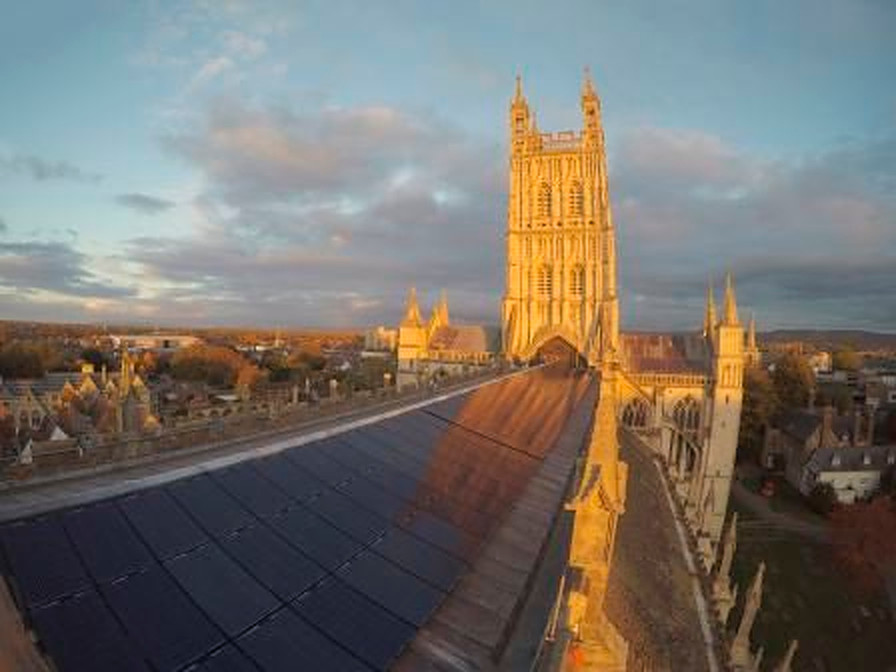A team of UK researchers led by the University of Bath has conducted a feasibility study to assess the economic viability of deploying a rooftop solar array on Bath Abbey, which is included in the National Heritage List for England covering buildings of special architectural or historic interest.
In the paper “Next steps in the footprint project: A feasibility study of installing solar panels on Bath Abbey,” published in Energy Science & Engineering, the scientists explained that while solar projects on historical buildings may require a high upfront investment, their profitability may be ensured by proper project design.
They used the commercial software package PVsyst to model, based on local solar irradiation and ambient temperature data, a 164-panel PV system to be deployed on the unshaded regions of the Abbey roof. The novelty of their approach consisted of considering shading effects in detail.
The 59.9 kW model solar array employed 21.1% efficient LG 365 Q1C-A5 solar modules with an output of 365 W from Korean manufacturer LG, and inverters from Chinese producer Huawei and US manufacturer SunPower. “Optimizers are included to minimize the impact of the shading on the PV system performance by ensuring that if any individual solar panel is shaded, the maximum current can still flow through that one panel,” the academics emphasized. “Other equipment choices could be considered to optimize further the cost and efficiency of the devices to maximize profits.”
Possible shading was analyzed considering beam, diffuse and albedo components. The analysis also took into account linear shading losses representing the irradiation deficit and electrical shading losses resulting from the electrical mismatches between shaded and non-shaded interconnected PV modules.
The PV system was assumed to operate under UK's net metering regime and its efficiency degradation was estimated at 0.4% per year. Installation costs were assumed to be £1,139 ($1,544) per installed kilowatt, which correspond to standard costs for the UK market in 2019. “The costs include the cost of safety and access equipment such as a crane with edge protection for the building,” the academics explained.
The model was stress tested for different changes to the price of electricity and the researchers found that, even with a 3% drop in electricity prices, the project would still be profitable. “We have assumed that all the electricity generated would be used except on days with excess generation compared with demand,” they stated. “This assumption is backed by information from staff at the Abbey that most of the demand is between 8 AM and 6 PM.” Their cost-benefit analysis showed that the solar array could pay for itself in 13 years and provide a profit of £139,000 over a lifespan of 25 years.
The research built on the success of a rooftop project installed on the Gloucester Cathedral in the UK in 2016. That array represented the first attempt to deploy solar on historical buildings.
This content is protected by copyright and may not be reused. If you want to cooperate with us and would like to reuse some of our content, please contact: editors@pv-magazine.com.




By submitting this form you agree to pv magazine using your data for the purposes of publishing your comment.
Your personal data will only be disclosed or otherwise transmitted to third parties for the purposes of spam filtering or if this is necessary for technical maintenance of the website. Any other transfer to third parties will not take place unless this is justified on the basis of applicable data protection regulations or if pv magazine is legally obliged to do so.
You may revoke this consent at any time with effect for the future, in which case your personal data will be deleted immediately. Otherwise, your data will be deleted if pv magazine has processed your request or the purpose of data storage is fulfilled.
Further information on data privacy can be found in our Data Protection Policy.